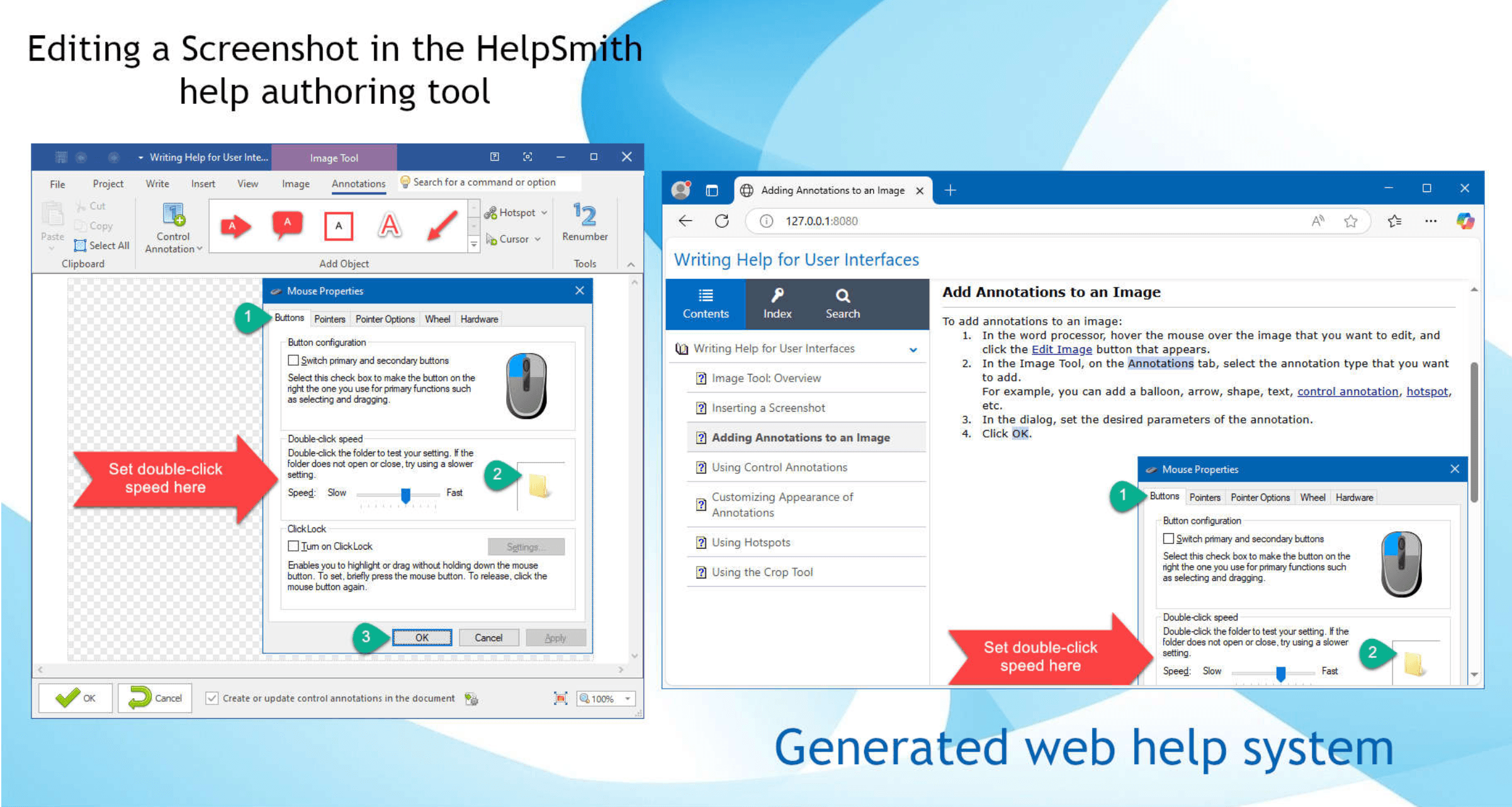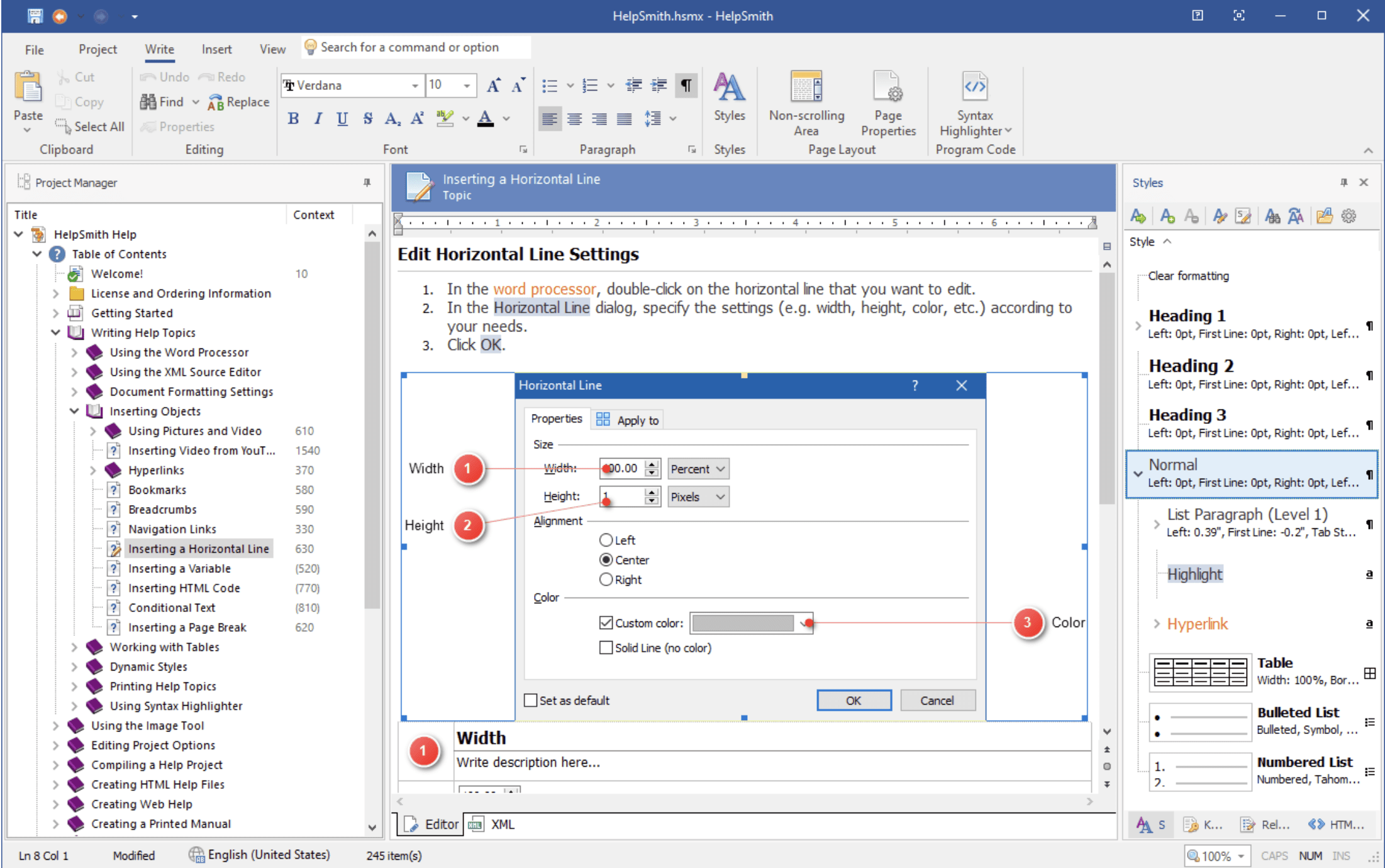
Any technology company, such as those that provide software or web-based services, typically includes a technical support service. From the customer’s point of view, support is an integral part of the product, as it helps to quickly resolve various issues and problems that arise when using the product, whether it is a simple application for home use, or, conversely, complex corporate software. For the product owner, a technical support service, of course, carries certain costs associated with both time and money. However, understanding the fact that support specialists spend time and effort answering frequently repeated questions makes it obvious that it is necessary to optimize the work of the customer service.
One of the ways to do this is to prepare answers to common questions, which could be published in the form of a help system. You can create such a help system using modern help authoring software. Let’s take a look at some of the features of these tools that could be used for technical support.
Key Features Of a Help Authoring Tool For Use By Technical Support
Help authoring tools allow developers of software products and web services to create documentation that answers various user questions, as well as provides specific instructions for solving certain tasks.
Among the key functions of a help authoring tool that will help streamline the work of the technical support service in your company are the following:
- The ability to build the documentation’s Table of Contents structure.
- Writing topics using a built-in text editor.
- Image editing tools for creating and annotating screenshots.
- The ability to insert code examples with syntax highlighting.
- Publication of documentation in the web help (or browser-based help) format.
Thus, with a help authoring tool, you can create documentation that can be supplied with the product itself. Besides that, through the integration and use of the “context-sensitive help” approach, the user can access relevant topics depending on the product features they are currently working with.
Additionally, a help authoring tool will allow you to create and publish supplementary documentation, such as related to the usage of important features, descriptions of API methods for third-party developers, or helpful tips and tricks for using your application.
Visuals as an Effective Way to Convey Information
While the Web Help system allows you to save time and effort when answering frequently asked questions, you need to take into account that users of your product may have different technical experience.
That is why, when writing documentation, you should follow certain principles. For example, documentation should be written in a simple language, avoid excessive use of complex technical terms, and contain clear and understandable instructions. In addition, it is necessary to include usage examples and screenshots that will complement the text of your documentation.
When creating documentation in the HelpSmith help authoring tool, you can create not only text content but also take screenshots and add various annotations to any images. Using screenshots is a great opportunity to complement the text of your instructions, and using annotations will focus the user on the interface elements specified in the documentation.
Various Types of Annotations That You Can Use
For example, for your screenshots, you can use annotations of the following types:
- Text – Adds text directly to the image.
- Numbering – allows you to identify the UI elements concerning step-by-step instructions.
- Arrows – to focus the user’s attention to the required element.
- Callouts – allows you to provide a detailed description of the UI elements in the text of the topic.

After editing an image, the program stores the initial image file and the added annotations separately. These objects are then combined with the image at the stage of generating the final documentation. Thanks to this approach, you can open and edit the images and annotations in your documentation project as many times as you want.
Thus, using screenshots and annotations will make your instructions as accessible and understandable as possible for the user. In many cases, the user will be able to figure out what needs to be done without even reading the documentation. It will also greatly simplify user interaction with the product’s technical support service.
Provide Links To Relevant Topics on Frequent Questions
Like any other documentation software, HelpSmith allows you to create a help system in the Web Help format.
A web help system is a set of HTML files that work like a regular website. Such a help system can be published on the website of your company or product, or used as an internal information system. At the same time, web help provides convenient navigation through the Table of Contents, search for relevant topics by keywords, as well as by the subject index, sorted in alphabetical order.
In principle, a web help system is similar to a traditional help file, which is present in almost any Windows application. The main advantage is that web help works in a browser, which means that users of your product can access help on any platform and from any device, including smartphones and tablets.
For example, to simplify the work with frequently asked questions, you can prepare a list of such questions and publish answers to them in the form of a web help system. Such a help system should have a clear structure, and the topics themselves should contain brief and understandable information about how a product or a particular function works, as well as provide step-by-step instructions for common user tasks.
When a new user asks a question about a specific product’s feature, a technical support specialist can provide a brief answer and then link them to a relevant topic that explains the answer in more detail.
How to Share the Link to a Specific Topic In a Web Help System
- Open the Web Help system in your web browser (e.g. in Chrome).
- In the Table of Contents, find the desired topic and right-click on it.
- In the pop-up menu, select Copy Link to this page.
- In your help desk system or an email message, use the keyboard shortcut Ctrl+V to insert this link into your message.
Alternatively, you can simply open the desired topic and copy the link to it from the browser’s address bar. For example, in a web help system generated using HelpSmith or similar help authoring software, this usually works as well because the web help system uses a frameless layout and any topic is displayed just like a regular webpage.
Other Useful Features of the Help Authoring Tool
HelpSmith offers a range of features that can be beneficial for creating help files, user manuals, and other documentation. These features include a robust word processor with dynamic styles, flexible conditional compilation capabilities, the ability to store a help project in an open XML format, a syntax highlighter to demonstrate code blocks, extensive customization options, and the capability to generate documentation in different formats – from browser-based help to PDF and Markdown formats. Because of its intuitive user interface and reasonable licensing cost, this help authoring tool stands out as one of the top products in the documentation software market.

Conclusion
The availability of high-quality documentation can help users understand and use your product more easily, as well as simplify their interaction with your technical support team. As a product owner, it’s essential to ensure that your documentation is written using a clear and simple language and includes step-by-step instructions for common tasks. You should also include screenshots with annotations to make your documentation easy to understand for users with different levels of technical knowledge.
Thankfully, the process of creating high-quality documentation has become easier with the help of modern documentation software mentioned in this article. These help authoring tools can help you create engaging and informative documentation that will benefit both your users and your business.








